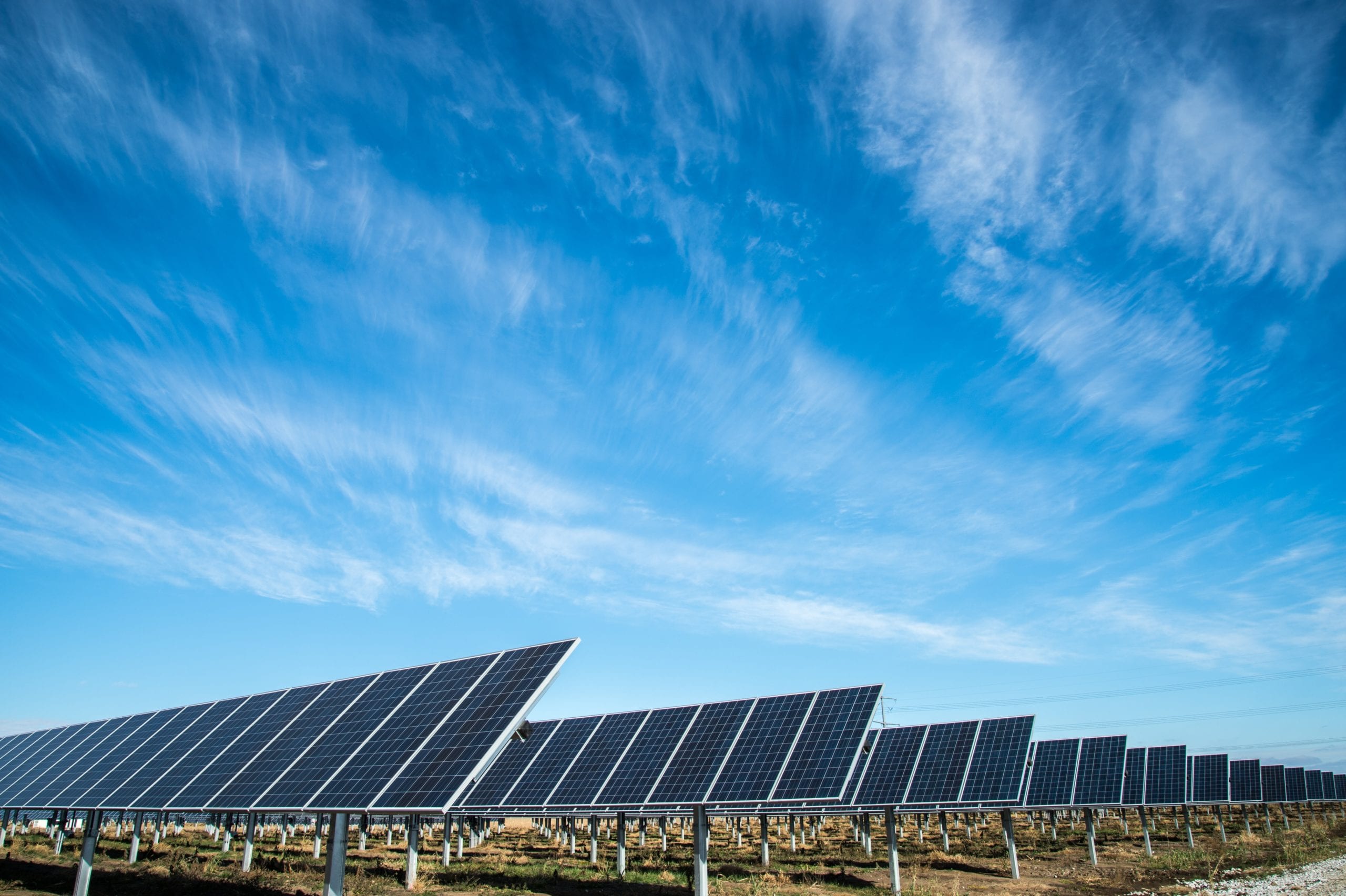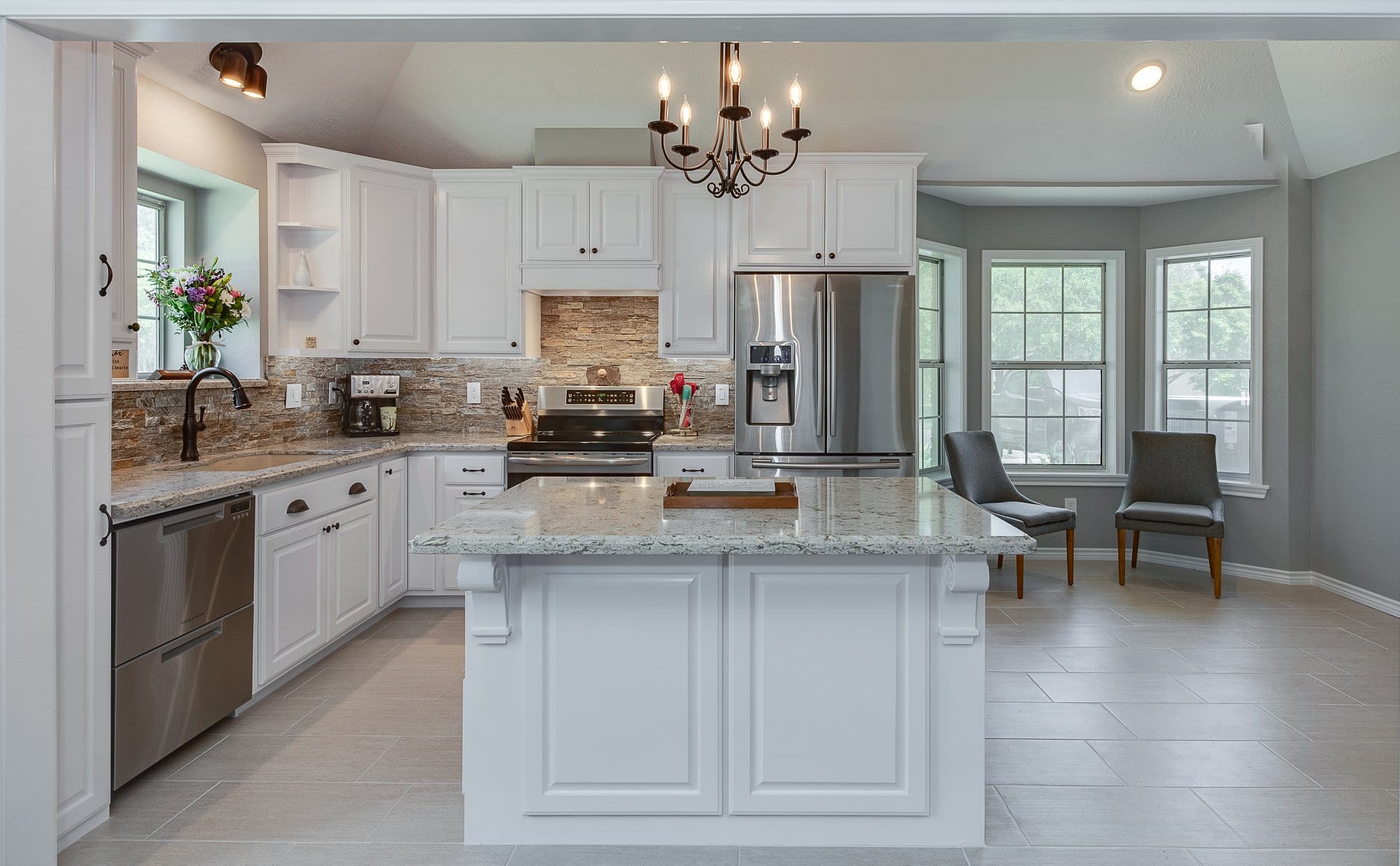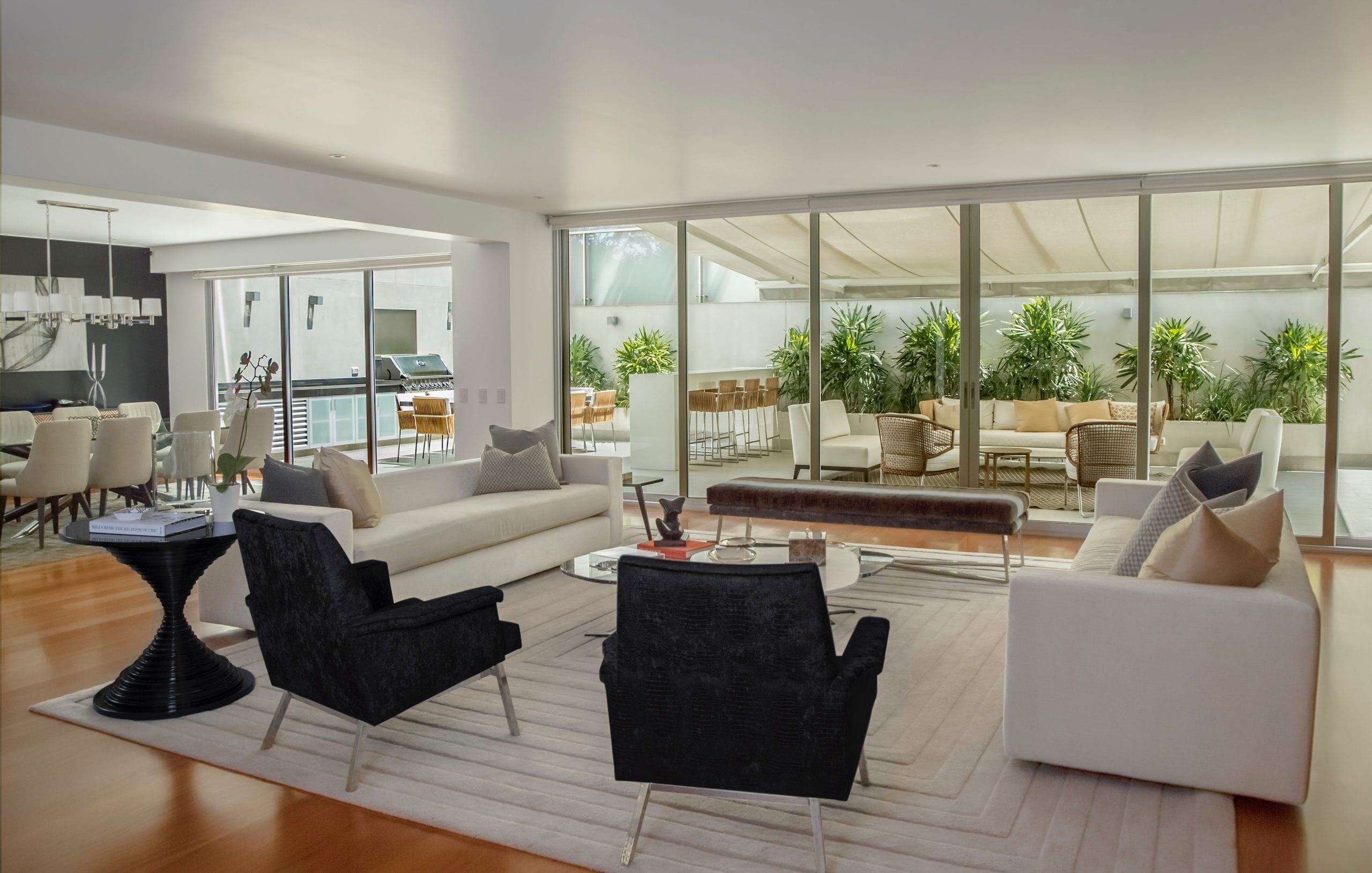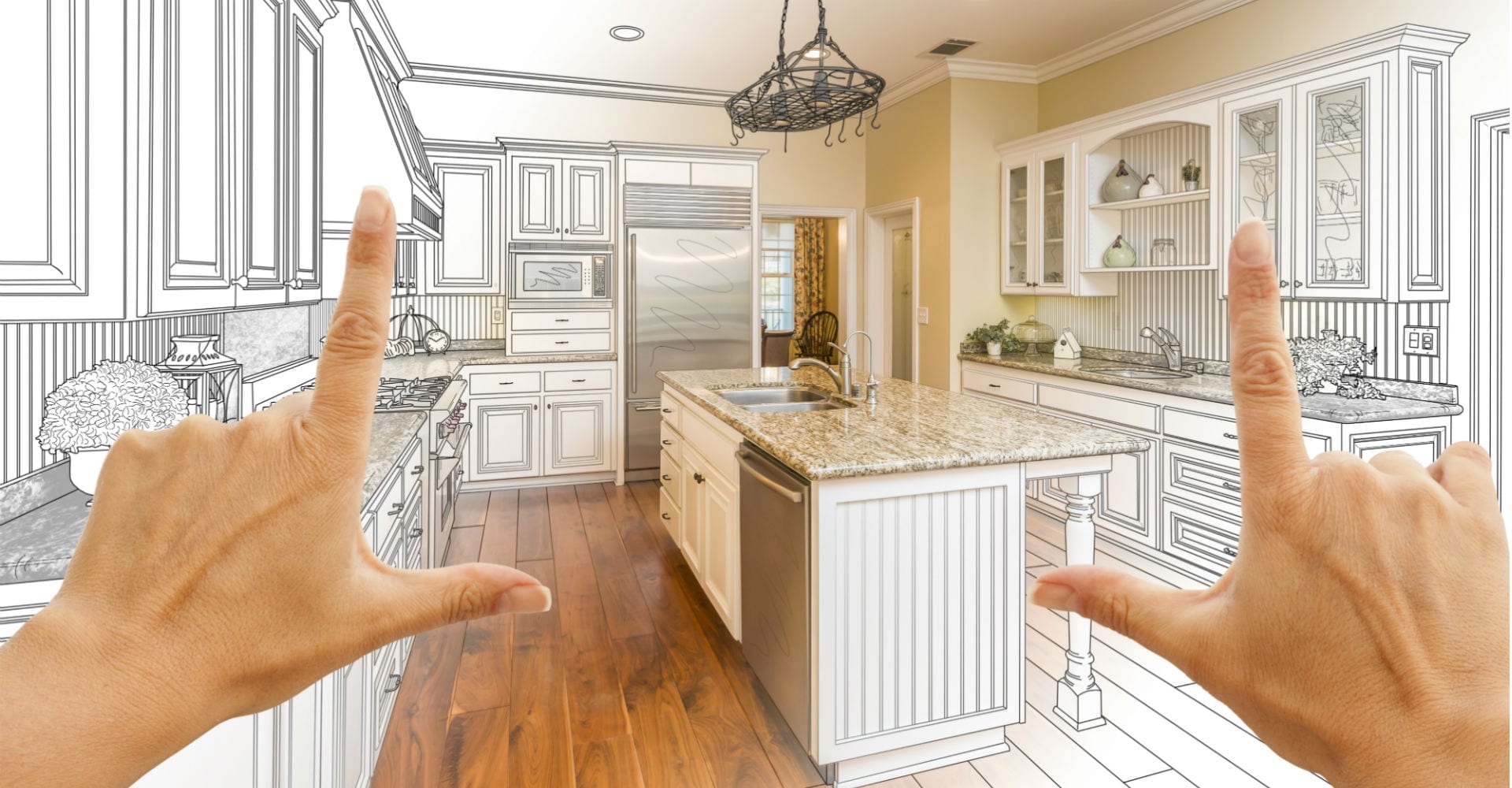Counter tops are the crown of the kitchen not only because they are one of the most pronounced design elements, but also because they are in constant use. In the 1950’s your choices for counter tops were laminate or tile. Now there are a myriad of additional countertop options.
Laminate and Tile
Though the old standbys are often maligned, they remain good choices. Laminate is the most cost effective counter top material. It is a hard, water resistant material that holds up well to wear. Used in combination with other materials it can even provide an interesting design element.
Tile is usually avoided because of the grout lines which can collect dirt and require maintenance. New epoxy grouts can eliminate most of this concern. And luckily your tile choice isn’t limited to the Pepto-Bismol colored hexagons of your grandmother’s kitchen. In the right setting, tile counter tops provide a great option.
Granite and Engineered Stone
The most common material these days for kitchen counters is granite. It is considered by many to be overdone and thus not a good design choice. But, not only is granite durable, it is also quite varied in its appearance. If you want distinctive granite, you are likely to pay a little (or maybe a lot) more for it. Granite has gotten a bad name because it requires some maintenance and because it can stain. But in our experience, the maintenance is light and infrequent. Granite sealers are best protected by not using acidic cleaners or setting hot pots directly on the counter. And, spills that do not sit for a long time are not likely to stain.
There are also artificial stones which include stone fragments in heavy duty resins. These materials are often more durable than natural stone and look and feel very similar. The most common of these is Silestone which is manufactured in Spain.
Solid Surfacing and Recycled Materials
About 45 years ago Corian began the evolution of our modern kitchen counter tops. This solid surface material now has many competitors such as Avonite, Gibraltar and Surrell. The reason that this material grew so fast in popularity is because it is durable and blemishes can be sanded out. It is also easy to work with. It is nonporous and easily cleaned.
Another relatively new material is paper that through a combination of pressure, temperature, and resins is made to be somewhat stone-like. This material is nonporous, scratch resistant, and easy to work with. This is a popular choice with those seeking to be eco-friendly.
Another popular choice among those seeking earth-kind-alternatives is a counter that includes recycled materials such as glass. These counters are heat and scratch resistant. They are also as durable as granite but do not require maintenance.
Miscellaneous Materials
Butcher block counters can provide the warmth of wood and a practical working surface.
Some of the more trendy and often difficult to work with products available include, glass, concrete and stainless steel counter tops.
Countertop Strategy
Often it is a good idea to utilize more than one countertop material. This can create pleasing contrast and also provide utilitarian workability. Often a work station with butcher block can be paired with stone (natural or artificial) to create hard and soft surfaces that provide a very organic feel.
Counters are used for many tasks including storing small appliances, chopping, and mixing. Make sure that you have the right counter top material, storage, lighting and working height for all who will be engaged in the kitchen. And be sure to explore unique features that will customize your counters! For example, my family and I like to garden. We have two round pans set into a butcher block counter in our kitchen that allow us to easily whisk peals and other cooking refuge off the counter as we chop and later take these to the compost.









